We use affiliate links to run our site. When you buy through links on our site, we may earn an affiliate commission, without any added cost to you. Learn more
You’ve nurtured your tomato plants all season, but just when those juicy red beauties are ripe for picking, sneak thieves attack! Don’t surrender your harvest to these unseen invaders. Arm yourself against the enemy to protect your tomato crop.
For home gardeners, few things are more frustrating than pests feasting on your vines and fruits. Left unchecked, these stealthy bandits can destroy your tomato yield.
This article exposes the 9 most wanted tomato pests. Learn their crafty attack strategies and how to stop them in their tracks. Arm yourself with the knowledge to defend your plants and enjoy a bountiful summer harvest.
By identifying and controlling the most notorious tomato pests, you can protect your plants with organic solutions. Gear up for garden warfare and banish these yield-robbing villains. Time to get strategic against these 9 deadly tomato pests.
How to Fertilize Tomato Plants?
Tomato Pests in A Nutshell:
| Pest Name (Scientific Name) | Nature of Destruction | Creative Ways to Protect the Plant |
| Tomato Fruitworm (Helicoverpa zea) | Feeds on tomato, corn, and cotton. Most damaging tomato insect pest in South Carolina. | – Plant tomatoes in well-prepared, fertile beds, mulched, and properly fertilized and watered to promote vigorous growth. – Use natural, less toxic insecticides such as Bacillus thuringiensis (B.t.), spinosad, and pyrethrin to control fruitworms. – Release beneficial insects like ladybugs and green lacewings for organic control. |
| Aphids | Sucking insects that can drain the vital juices out of leaves, leaving them yellowed and weakened. | – Spray with insecticidal soap or neem oil extract to control aphids. – Release beneficial insects like ladybugs and green lacewings for organic control. |
| Leaf-footed Bugs & Stink Bugs | Feed on tomato plants, causing damage to fruits and leaves. | – Use horticultural oil or neem oil extract to control leaf-footed bugs and stink bugs. – Spray with insecticides like bifenthrin, cyfluthrin, malathion, esfenvalerate, or cypermethrin. |
| Flea Beetles | Feed on leaves, causing small holes and defoliation. | – Spray with insecticidal soap or neem oil extract to control flea beetles. – Use yellow sticky traps to attract and trap adult beetles. |
| Tomato Hornworm (Manduca quinquemaculata) | Large, green caterpillars that can quickly defoliate tomato plants. | – Handpick and remove hornworms from plants. – Spray with natural, less toxic insecticides like Bacillus thuringiensis (B.t.) or spinosad. – Release beneficial insects like parasitic wasps that prey on hornworms. |
| Whiteflies | Suck the sap from the leaves, causing them to yellow and wilt. They also excrete a sticky substance that can attract other pests and lead to the growth of sooty mold. | – Use yellow sticky traps to attract and trap adult whiteflies. – Spray with insecticidal soap or neem oil extract to control whiteflies. – Release beneficial insects like ladybugs and green lacewings for organic control. |
| Nematodes | Feed on the roots of tomato plants, causing stunted growth, wilting, and yellowing of leaves. | – Rotate crops to prevent nematode buildup in the soil. – Use nematode-resistant tomato varieties. – Apply organic soil amendments like compost and aged manure to improve soil health and reduce nematode populations. |
| Spider Mites | Suck the sap from the leaves, causing them to turn yellow, dry out, and fall off. They also produce webbing, which can cover the leaves and stems. | – Spray plants with a strong stream of water to dislodge spider mites. – Introduce predatory mites, which feed on spider mites. – Apply insecticidal soap or neem oil extract to control spider mite populations. |
| Psyllid | Feeds on the leaves and stems of tomato plants, causing them to curl, turn yellow, and become stunted. They also excrete honeydew, which can lead to the growth of sooty mold. | – Use reflective mulch to deter psyllids from landing on the plants. – Introduce beneficial insects like ladybugs and lacewings, which feed on psyllid. – Spray with insecticidal soap or neem oil extract to control psyllid populations. |
| Cutworms | Feed on the stems of young tomato plants, causing them to wilt and die. They are most active at night and hide in the soil during the day. | Feeds on the leaves and stems of tomato plants, cause them to curl, turn yellow, and become stunted. They also excrete honeydew, which can lead to the growth of sooty mold. |
9 Deadliest Pests For Your Tomato Plants
1. Aphids:
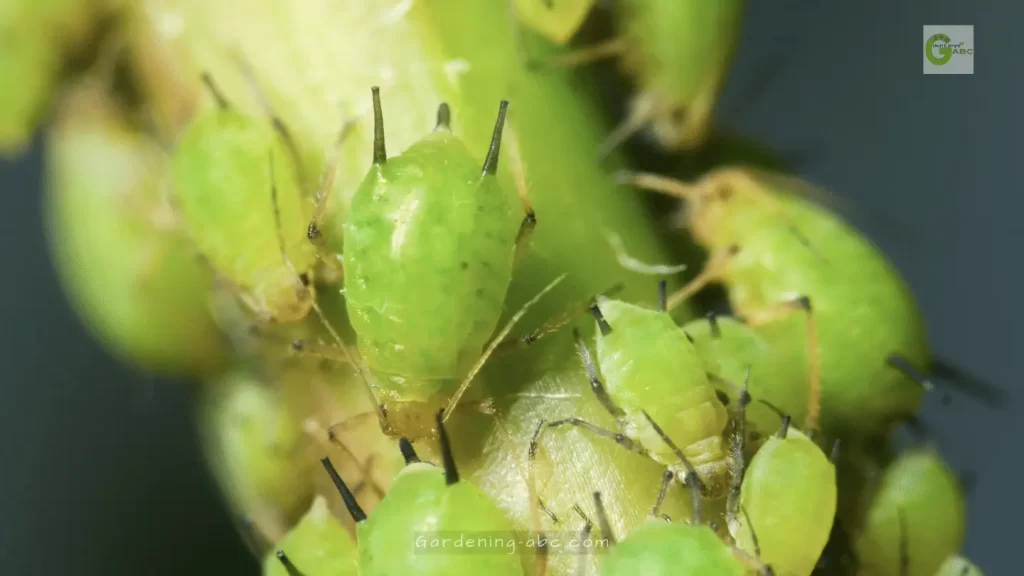
These are very small insects that are found on the leaves or the stems of the plant. They pierce veins, stems, growing tips, and blossoms with their needlelike mouthparts.
Though one or two of them may not cause any major harm to the plant, once the numbers grow they create problems like curly leaves or yellowing of the plant, or leave some sticky residue on the plant.
Other than tomatoes aphids also infect plants like potatoes, eggplant, pepper, peas, beans, apples, etc.
Aphids are wingless. These soft-bodied insects can be ⅛-inch long and have a pair of cornicles. They spread rapidly from field to field and cause a number of viral diseases.
2. Stink Bugs & Leaf-footed Bugs:

Several species of stink bugs, and leaf-footed bugs, can be serious threats to tomatoes and other vegetable crops including cowpea, okra, eggplant, potato, strawberry, melons, etc.
The bugs are shield-shaped, ¾ inch in length.
The bugs pierce tomato plants with their needlelike mouthparts and suck sap from the plant. The damage will vary depending on the growth stage of the plant. If the infected fruits are not matured they become deformed as they develop.
3. Cutworms:
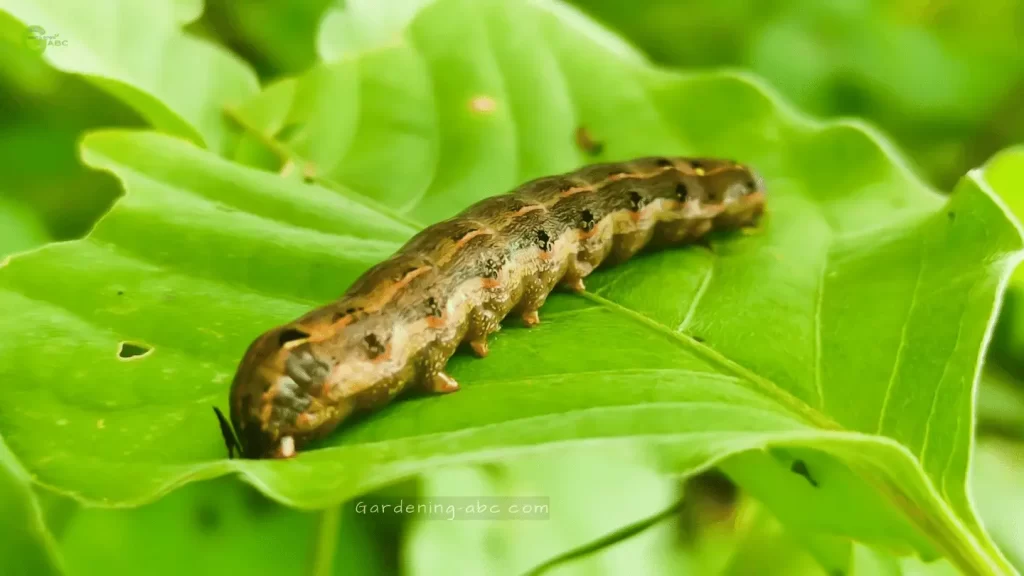
These tiny caterpillars suck the juice out of the tomato plants. They attack young plant stems during the night. Severe attack results in a chewed stem which can easily be seen on an infected plant.
One of the simplest solutions to the cutworm problem is to place collars made of paper, and aluminum foil around the seedlings. Place the collars about an inch into soil around individual seedlings, and at least three inches show above the ground. This will deter high climbers.
4. Hornworms:
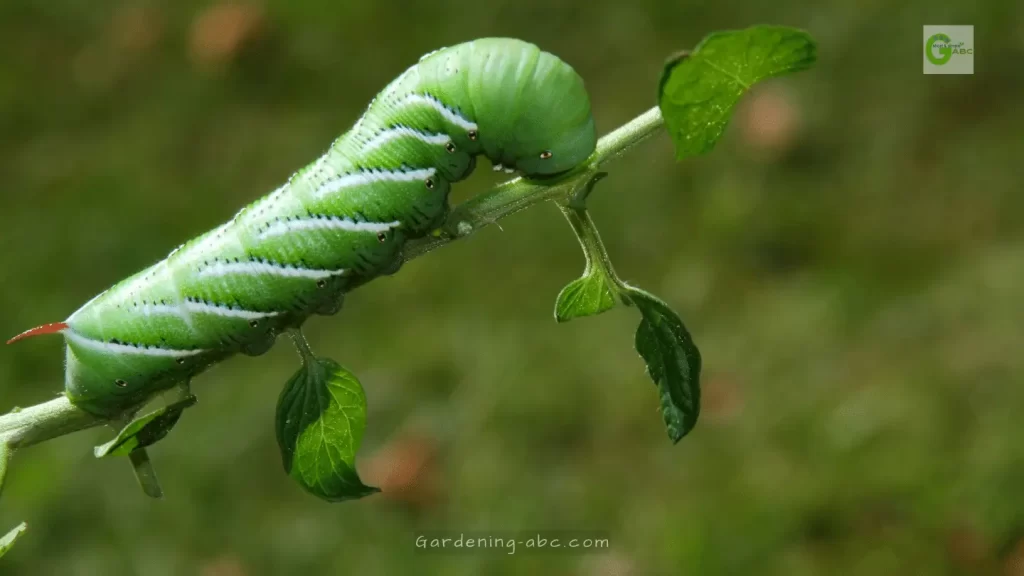
These are cylindrical in shape and greenish in color. You would find them underside of leaves. They have a voracious appetite and can eat up most of the plant in a couple of days.
The distinguishing feature of this larvae is a curved and red hornlike structure that projects from a posterior abdominal segment of the body.
Hornworm larvae strip leaves from the tomato plants and also feed on the developing fruits. As they feed on the surface, they leave large, open scars on the fruits.
Hornworm infestation is generally common in midsummer.
Hornworms feed primarily on solanaceous plants. So other than the tomato plants you will also find hornworms in plants like tobacco, eggplant, pepper, etc.
5. Beetles:
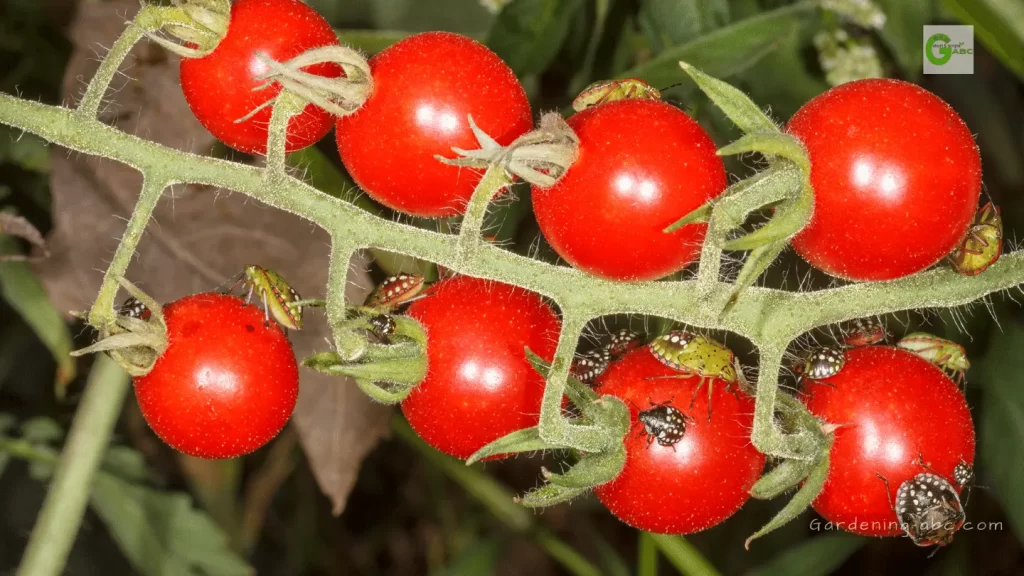
They are also called Flea-beetles as they resemble a flea. Adult beetle attacks the foliage and leave with numerous small holes. The larvae feed on the tomato roots.
Though I have mentioned it as a tomato pest, it can also cause damage to cabbage, potatoes, eggplants, etc. If your plant is being affected by beetles you will find numerous small holes in the leaves. Generally, the damage is not very severe and you can easily control the spread.
How to protect Tomato Leaves against Sunburn?
6. Psyllid:
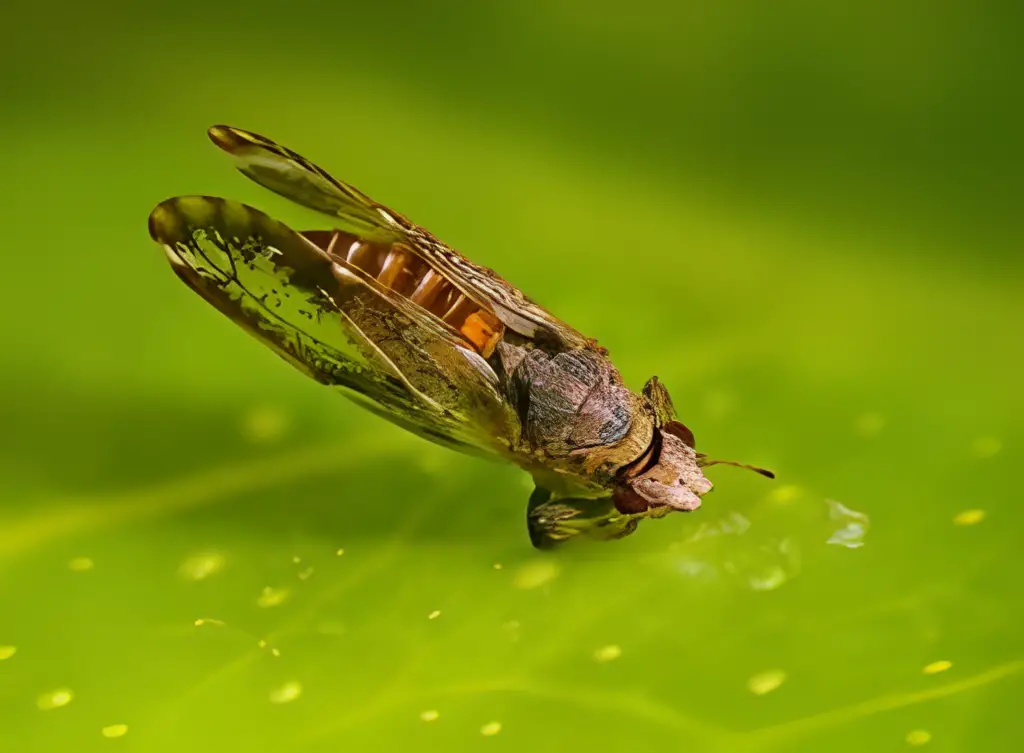
The adult psyllid is a small insect and is about 3 mm long. They have white or yellowish markings on the thorax, clear wings, and lines on the abdomen between segments. Psyllids lay tiny eggs on stalks, on the underside of leaves, and along leaf margins.
Within 10-15 days nymphs hatch from those eggs. You can easily distinguish the nymphs from whitefly nymphs from their appearance. As the older nymphs are greenish and fringed with hairs and have wing buds.
The nymphs are the deadliest stage for your tomato plants. They feed on the leaves of the plant and during feeding inject a toxin that causes death in transplants, stunting, chlorosis, and curling of leaves in pre-flowering plants.
It can completely stop fruit production or the overproduction of very small, useless fruits in larger plants.
Purplish veins in the leaves of the tomato plants confirm psyllid infection.
7. Spider Mites:
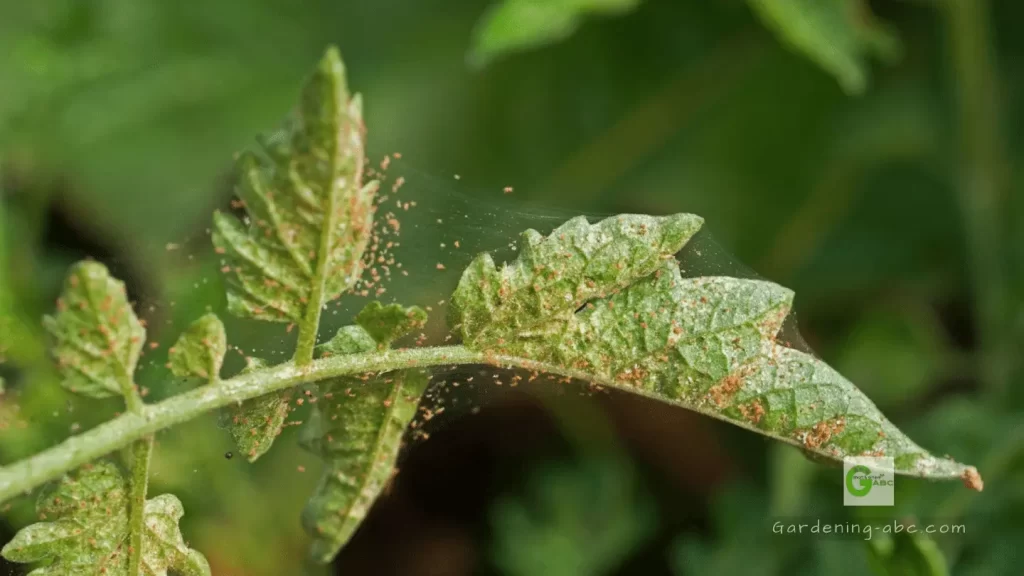
Spider mites are quite common in tomato plants. They form webs on the underside of the plant.
The infestation generally starts on the lower leaf surface and then moves on to the upper leaf surface.
You will find small patches on the leaves and the leaves will become pale. If the infestation is severe, you will see webbing at the ends of branches. This may also cause defoliation of your tomato plants.
Dispose of highly infected branches or replace the plant to avoid spreading.
8. Nematodes:
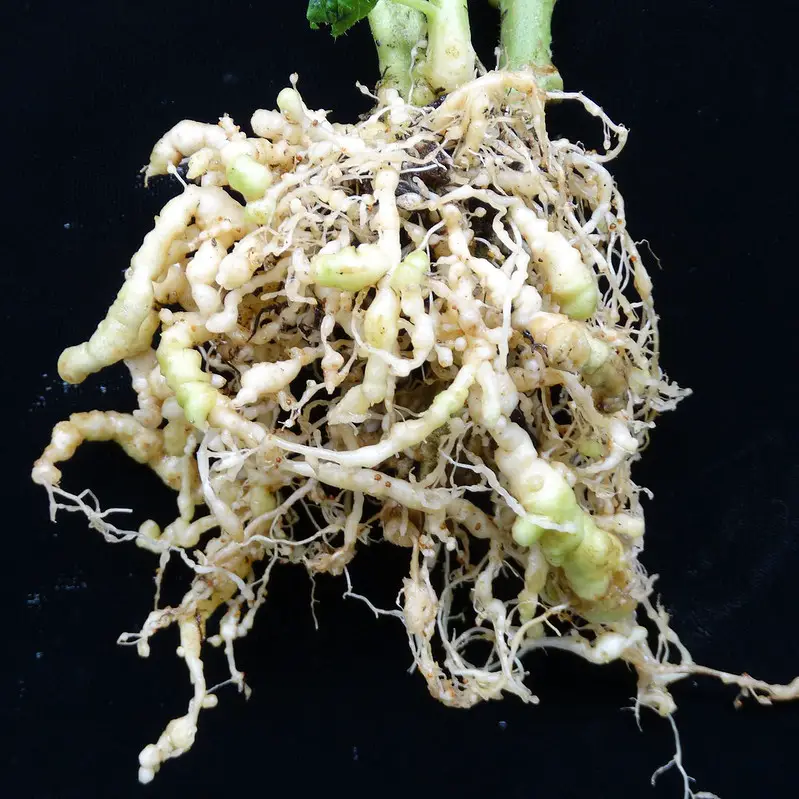
The nematode problem is one of the most problematic areas of tomato growing. Nematodes are tiny (often microscopic) little worms that infest the soil. Among all the known species of nematodes, root-knot nematodes are the most common form of nematodes that affect tomato growth.
They interrupt the normal process of taking water and other nutrients in tomato plants through the roots by burrowing into them. As a result, you will see various knobs in the roots of the plant.
Controlling nematodes can be a bit tricky. This is because not all nematodes harm your plants rather there are many nematode species that actually help your plants to thrive, and you don’t want to kill them.
We have a separate article on nematodes and their control see that for information on how to stop root-knot nematodes affecting your tomato plants.
9. White-flies:
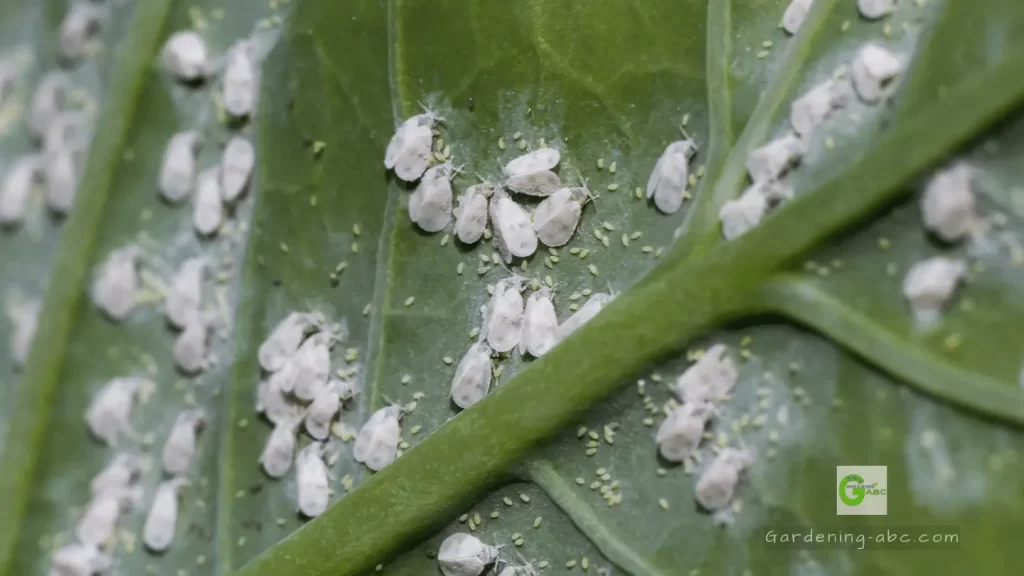
Silverleaf whiteflies are common pests of tomato plants. These are small whitish-yellow insects that feed on plant juices and leave behind a sticky residue.
The flies lay 80-100 whitish eggs on the undersides of new leaves. From these eggs glassy to opaque yellow nymphs (immature stage) emerge.
Whiteflies damage tomato plants in two ways. Firstly, both adults and nymphs suck up the plant sap. This can cause leaf wilting in tomato plants. Secondly, the sticky residues left by those flies become nests for fungi.
The whiteflies also carry and spread many viral diseases.
How to Prevent The Tomato Pests:
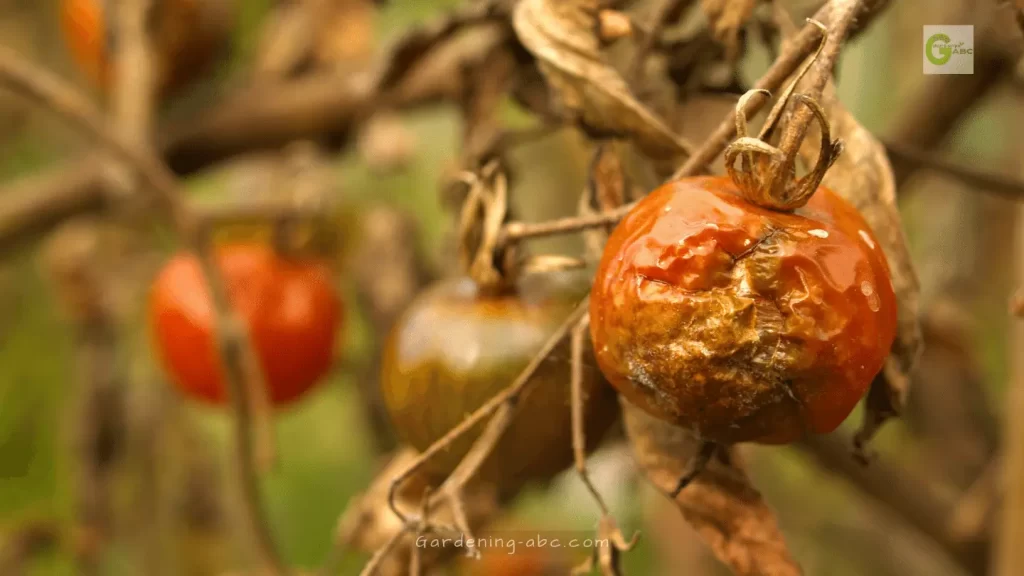
There are several ways to fight tomato pests.
You can try spraying water or organic mixtures such as Neem oil, and garlic extracts. Neem cakes can do wonders to fight pests. They are one of the best solutions to control nematodes.
Some of the pests you can easily remove just by picking them with your hands. Worms aphids are easily visible to the naked eye and it should not be a problem to pick them manually.
Use crop rotation methods. It is a very handy tool to prevent pest infestation.
Grow companion plants along with your tomatoes. They will not only deter pests but can also help in increasing the overall production of your tomato plants.
Can You Plant Tomatoes With Cucumbers:
There are many other organic controlling methods to prevent any pest infestation. We have shared the 12 most common organic ways of controlling pests in this article, try those out.
Don’t get tempted to opt for chemical pesticides they can cause chemical resistance in pests which will harm your tomato plants in the long run. So give organic methods a chance.
Final Thoughts:
You now have the inside scoop on how to outsmart the 9 most wanted tomato thieves. Use your newfound knowledge to defend your plants and reap a bountiful harvest. The tomato pest war is on – inspect frequently, act swiftly, and never surrender your crop!
We began this crusade by gearing up for battle. Now you’re armed and ready to defeat these stealthy invaders threatening your tomatoes. Time to put your defense tactics to work!
Brainstorm the solutions you’ll use – organic, chemical, or a strategic mix? Connect with fellow gardeners to swap pest control tips. And stay tuned as the garden pest warfare continues… we’ll tackle more vegetable-loving villains soon!
Thank you for joining the fight against tomato pest sabotage. Here’s to a summer of bountiful harvests with those sweet, juicy red beauties ripe for the picking! May your garden remain a pest-free tomato paradise. Happy gardening!
What is your experience in growing tomatoes? Are you facing any of the above-mentioned pests? Do let us know.

You will find more interesting posts related to tomato growing on this site. Do check them if you are really serious about growing tomatoes.
Amazon and the Amazon logo are trademarks of Amazon.com, Inc, or its affiliates.

Awesome Site. Really enjoyed reading.